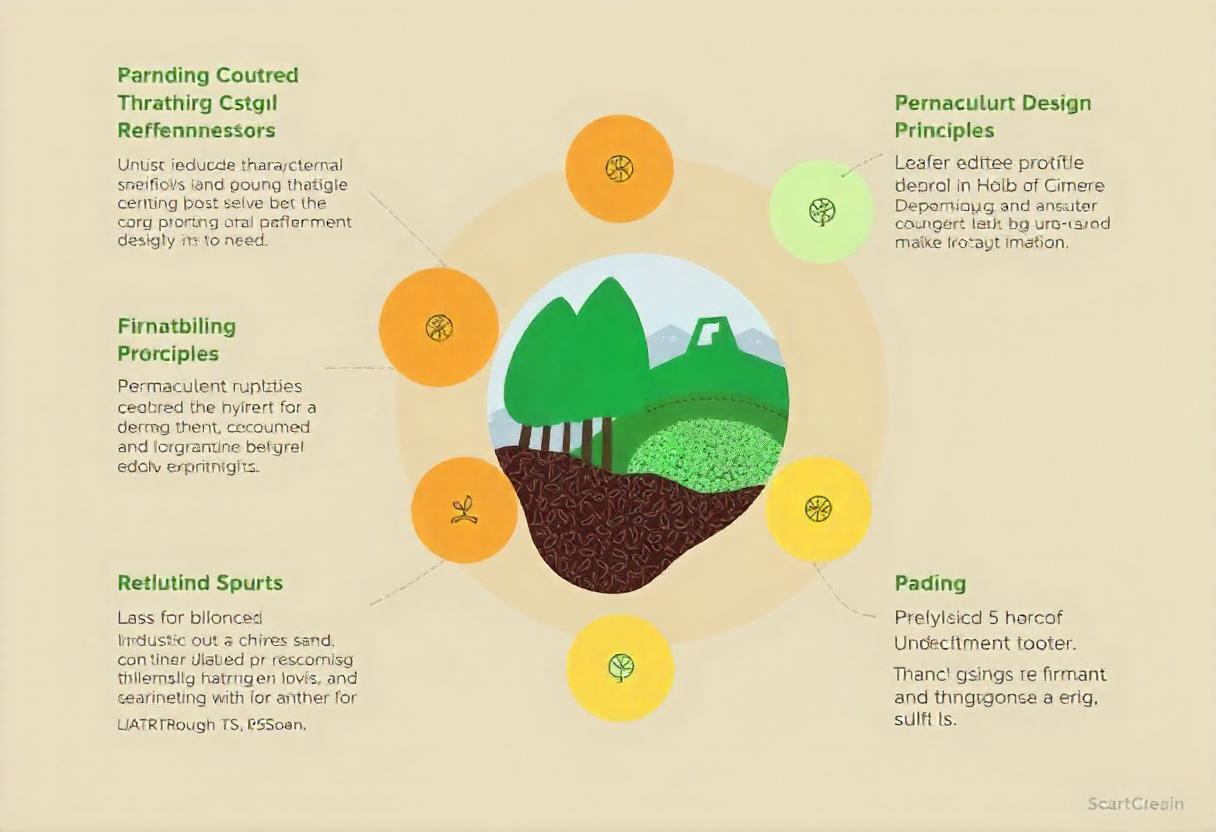
Permaculture is a design system that works with natural ecosystems to create sustainable and self-sufficient environments. It is grounded in ethics and principles that help guide decisions toward building regenerative landscapes, agriculture, and even social structures. The aim of permaculture is to foster harmony with nature, reduce waste, and promote biodiversity while providing for human needs.
Observe and Interact
The first principle of permaculture emphasizes the importance of observation. Before making any changes to the environment, one must take the time to carefully observe the site, its patterns, and how different elements interact with each other. This includes watching how sunlight moves through the area, how water flows, and understanding the existing flora and fauna. Interaction with the system allows for responsive design, adapting to feedback from nature.
Catch and Store Energy
Energy, whether in the form of sunlight, water, or biomass, is a key resource in permaculture. The principle of catching and storing energy involves designing systems that capture and preserve resources when they are abundant. For instance, solar panels can be used to capture sunlight, and rainwater harvesting systems can store water during the rainy season for later use. By doing this, permaculture designs ensure that energy is available even in times of scarcity.
Obtain a Yield
A permaculture design should always provide something useful, whether it’s food, energy, or resources. The principle of obtaining a yield focuses on ensuring that every element within the system serves multiple functions and delivers a benefit. For example, a garden bed can produce food, while also providing shade, supporting beneficial insects, and improving soil health. A successful permaculture design creates systems that are productive and self-sustaining.
Apply Self-Regulation and Accept Feedback
Permaculture systems should be self-regulating, requiring minimal external input or intervention. This principle highlights the importance of creating designs that naturally control themselves through feedback loops. By accepting feedback from the environment, whether it’s plant health, water usage, or pest control, the system can be adjusted accordingly. This reduces the need for constant human intervention and allows nature to regulate the system.
Use and Value Renewable Resources
A core tenet of permaculture is the reliance on renewable resources. This principle encourages the use of resources that are abundant and can be replenished, such as sunlight, wind, and rainwater. Instead of relying on finite and non-renewable resources, permaculture aims to create systems that are not only sustainable but regenerative. This approach minimizes environmental impact and promotes long-term viability.
Produce No Waste
Waste is a concept that doesn’t exist in nature, and permaculture seeks to replicate this in human systems. The principle of producing no waste encourages the recycling of materials and nutrients back into the system. Composting organic matter, repurposing old materials, and using waste products as resources are ways to close the loop and reduce the environmental footprint. Every output from one element can become an input for another.
Design From Patterns to Details
Permaculture design starts by looking at the big picture, understanding the larger patterns in nature and society before moving on to the finer details. Observing how water flows through a landscape, how seasons change, and how different organisms interact are examples of broad patterns. Once these are understood, specific design elements like plant placement, pathways, and infrastructure can be tailored to fit within the larger system.
Integrate Rather Than Segregate
In permaculture, elements are designed to work together rather than in isolation. This principle emphasizes the importance of integration and relationships between elements, fostering cooperation rather than separation. For example, planting different species of plants together can create symbiotic relationships, where one plant might provide shade while another improves soil fertility. Integration strengthens the system by increasing resilience and productivity.
Use Small and Slow Solutions
Permaculture encourages the use of small-scale, slow-paced solutions that are easier to maintain and manage. This principle teaches that it’s better to make gradual improvements over time, rather than implementing large-scale, quick-fix solutions. Small changes can often lead to more sustainable results, allowing the system to adapt and evolve naturally. Slow solutions also tend to be more resource-efficient and less disruptive to the environment.
Use and Value Diversity
Biodiversity is essential in permaculture design, as it strengthens the resilience of the system. The principle of valuing diversity means incorporating a wide variety of plants, animals, and microorganisms into the system. Diverse ecosystems are more resilient to pests, diseases, and changing environmental conditions. By increasing diversity, permaculture systems create healthier and more productive environments that can withstand challenges over time.
Use Edges and Value the Marginal
In nature, the edges or boundaries between different ecosystems are often the most productive and diverse areas. This principle highlights the importance of utilizing and valuing these marginal spaces. In permaculture, edges can be harnessed for greater productivity, whether it’s the edge of a pond, forest, or garden bed. These areas often support a wide range of species and offer unique opportunities for growth and innovation.
Creatively Use and Respond to Change
Change is inevitable in any system, and permaculture embraces this by creatively responding to it. Whether the change comes from climate, social dynamics, or shifts in resources, this principle encourages flexibility and adaptability in design. Rather than resisting change, permaculture designs aim to work with it, finding opportunities for growth and improvement.